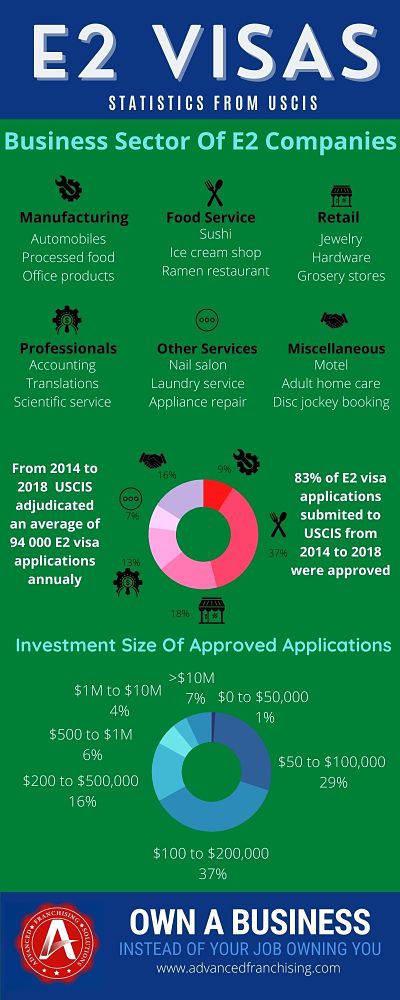When athletic coaches get ready to go into a game against a major competitor, they sit down beforehand and work out a strategy for winning. They assess their team’s strengths and weaknesses, as well as those of their opponents, and they decide which plays will work best for them in the upcoming game.
When you’re launching a business, it’s a good idea to have a similar strategy for how to win.
Making money with an E2 business can mean the difference between you keeping and losing your visa. A strong business strategy can give you the best chance of success.
Read on to learn more about how you can make money with your E2 business and optimize your chances of success.
What Is an E2 Business?
Before we get into how you can set up a strong strategy for your E2 business, let’s talk about what an E2 business is. An E2 visa is designed to help investors start a business in the United States. This visa is temporary and comes with some specific requirements, which we’ll dive into more in a moment.
In particular, the E2 visa is aimed at entrepreneurs who are prepared to invest a significant amount of money in launching their business. This requirement is meant to ensure that business owners who get approved will be able to do what it takes to make their business a success. And while 80 percent of these applications are approved, one in five get turned down.

E2 Visa Requirements
There are three basic requirements that you must meet in order to get an E2 visa approval. First of all, you must come from a country that has a treaty of commerce and navigation with the United States. You can find a list of these countries and details about their treaties on the U.S. Department of State’s website.
You must also have invested or be in the process of investing a “substantial amount of capital” in your business in the United States. A substantial amount of capital simply means that you’ve invested enough money to ensure your business will be successful.
And finally, you must be moving to the United States for the sole purpose of starting and running your business.
Set Goals for Your Business
When you’re trying to make money from an E2 business, the first thing you need to do is to set goals for your business. These goals will guide you both as you’re making your business plan and as you adapt your business to make it more successful. Your goals should focus on what success will mean for your business, as well as outlining attainable benchmarks.
It’s a good idea to use the SMART model when setting your goals: specific, measurable, attainable, relevant, and timely. Set up a series of benchmarks for yourself that will show how your business is doing at one month, three months, six months, and one year. If you haven’t hit these benchmarks, you’ll know you need to reevaluate your strategy and try something new.
Establish Your Company Values
Once you have your goals in place, you’ll need to establish a set of values for your company. These, along with your goals, will be the guideposts you use to develop and adapt your business strategy. While the goals are the “brain” of your company, your values are the heart.
Think about what sort of company you want to run, and what morals you want to live out every day. This can include things like how you’ll treat your employees, what you want customer interactions to look like, and what sort of impact you want to make in your community. Try to make these as specific as possible, and write them down so you can refer back to them at later points in time.
Run a SWOT Analysis
Now that you know who your company is and what you hope it will become, it will be time to start figuring out your position in the market. One of the best ways to do this is to run a SWOT analysis. This acronym stands for strengths, weaknesses, opportunities, and threats, and will help you better understand your company’s initial standing in the local economy.
Start by listing off strengths your business has to offer, followed by any weaknesses it has. Be as honest as possible during this section of the analysis; biased viewpoints will only hurt your company’s success down the road. End by taking a look at the opportunities your company has in the local market, followed by threats from competitors or market factors.

Figure Out Your Competitive Advantage
With your SWOT analysis done, you’ll be in a good position to figure out your business’s competitive advantage. This will be the thing that sets you apart from other businesses in your sector, and makes customers want to choose you over your competitors. It will be an important part of your marketing campaigns and your analysis as you plan to expand your business.
Your competitive advantage should be based on all the factors you’ve already looked at: your SWOT analysis, your goals, and your values. This advantage could be anything from a new market niche that no one else is covering to a different business model that allows you to offer lower prices. It should offer real value to your customers and be succinct enough that you can build marketing campaigns around it.
Establish a Target Customer
Now that you know what sets your business apart for customers, it will be time for you to start looking at whom those customers are. Having a target customer profile can help you to target both your business strategy and your marketing. You can research what that demographic responds to and make sure your product offerings line up with their needs.
When you’re building a target customer profile, be sure to be as specific as you can be. Of course, this should include demographic information, such as age, income level, marital status, and so on.
You should also include details about their interests, the publications they read, the social media they’re involved with, their political views, and more.
Create a Plan for Success
Once you have all this analysis and information in hand, you’ll be ready to start planning your company’s path to success. Your business plan should start with your goals and work backward, using the data you’ve gathered to plan out how you’ll achieve those goals in your allotted time. This plan should be specific and should hold to the values you established for your company.
Make sure your business plan considers every aspect of your plan for success, from marketing and product development to financing and staffing needs. Each step should be specific, attainable, and given a deadline. This will help you measure if your plan is working or if you need to adjust it as you go.

Look Long-Term
As you’re creating your business strategy, you need to be sure to keep your focus on the long-term. It can be tempting, especially when you’re working on an E2 visa, to focus on getting your business to grow as much as possible as quickly as possible. However, sacrificing long-term success for short-term profits is a good way to wind up in the ranks of the 70 percent of small businesses that close within their first decade.
Make sure you keep your business growth slow, steady, and sustainable as you create your business strategy. While most of your planning should be focused on the first year, you should also sketch out goals and plans for the first three and five years of your business. You need to account for long-term needs, potential market shifts, revenue changes, and other such factors.
Focus on Diversity
With your business plan in place, you’ll be ready to start building your company team. As you do this, it’s a good idea to focus on maximizing diversity in your business. As an immigrant yourself, you’ll bring a unique perspective to the team, but you should also pull in as many different perspectives as possible.
Having people from a variety of races, genders, sexual orientations, religions, economic backgrounds, and ages will help you gain a new perspective on challenges your business faces. You’ll have a wider range of people who can help you connect to customers of different backgrounds. And you’ll create a workplace that is centered on compassion, understanding, and inclusivity.
Use Your Resources Wisely
Another important key to success is to make sure you’re using your resources wisely. Your resources can include everything from time and money to employee skills and product materials. Making the most of all these resources can help your business grow to its maximum capacity and keep it thriving with as little expense (financial or otherwise) to you as possible.
On a regular basis, it’s important to evaluate your processes and look for areas where resources are being wasted. Talk to your team about ways you can better use time, materials, or budget. Focus your resources on areas that are successful and which generate a lot of revenue, and try to give your team tasks that are best suited to their skill sets.

Focus on the Data
When you’re running your business, it can be easy to get caught up in what feels like will work better. But making emotional judgments like this can mislead you and waste your resources. Instead, you need to keep your decisions and adjustments focused around the data you get from your business.
Keep up with key performance indicators that show exactly which processes, products, and systems are successful and which are not. You need to be running these metrics on every division of your business, from marketing and product development to employee training and customer communication. Use this information to guide changes you make, and look for ways to optimize low-performing areas.
Stay Flexible
On the subject of making changes, it’s important to adapt your business plan as you go along. While sticking to your business plan to a degree is important, it doesn’t make sense to keep doing things you know aren’t working. You’ll discover different things that work and don’t as you go along, and you need to be able to adjust to meet new circumstances.
Make sure you stay flexible with your approach and adjust your business strategy when something stops working for your company. Keep up with the latest in your industry, and incorporate updates and improvements where you can. Staying agile can mean the difference between success and failure in your E2 business.
Use Relevant Business Strategies
Once you go beyond the basics we’ve just discussed, you’ll discover that there’s a whole world of business strategies out there for you to discover. You can cross-sell products, grow sales from your new products, focus on pricing strategies, gain a technological advantage, aim to improve customer retention, and much, much more. There are tried-and-true strategies for just about any area of your business you want to work on.
Research business strategies designed to tackle problems you’re having with your business. Pick ones that are similar to strategies that currently work well for you and which fit in with your business model. As with the rest of your business strategies, assess whether these are working for you, and adapt as you get more information.

Find the Right Business Strategy for You
Having a strong business strategy can help improve the chances that you make money with your E2 business. Make sure you do all the research and analysis that you need to before developing your business strategy. Keep an eye on the long-term, be smart with your resources, and make sure you update your plan as the data rolls in.
If you’d like to find the right business strategy for your E2 business, check out the rest of our site at Advanced Franchising Solutions. Our proven process saves you time, helps you avoid frustration, and streamlines your franchise search. Get a free franchise education today and start owning a business instead of your job owning you.
